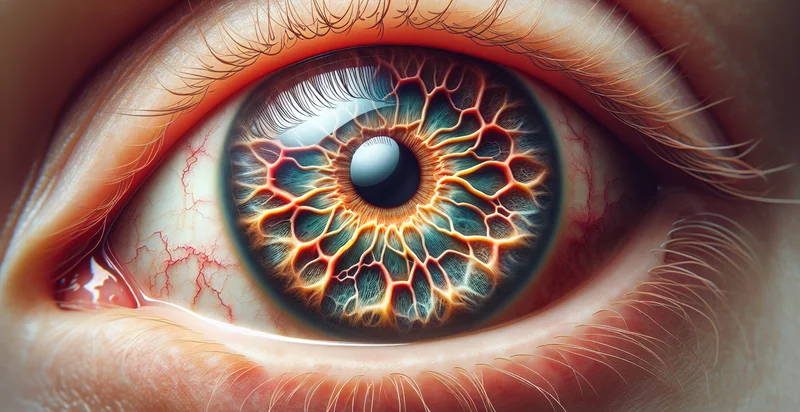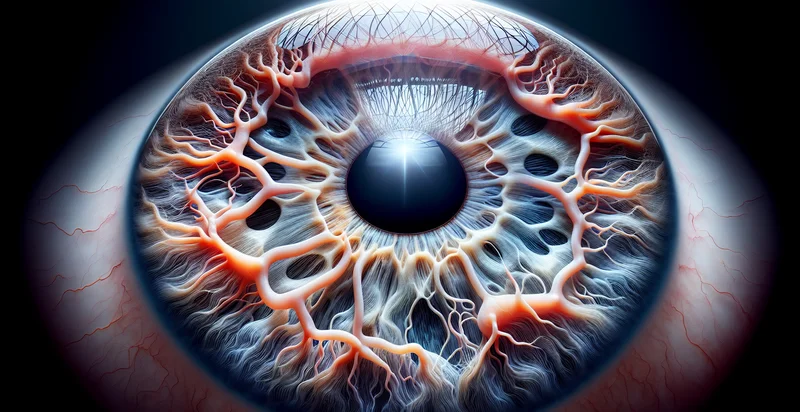Identify corneal ulcer
using AI
Below is a free classifier to identify corneal ulcer. Just upload your image, and our AI will predict if a corneal ulcer is present - in just seconds.

Contact us for API access
Or, use Nyckel to build highly-accurate custom classifiers in just minutes. No PhD required.
Get started
import nyckel
credentials = nyckel.Credentials("YOUR_CLIENT_ID", "YOUR_CLIENT_SECRET")
nyckel.invoke("corneal-ulcer", "your_image_url", credentials)
fetch('https://www.nyckel.com/v1/functions/corneal-ulcer/invoke', {
method: 'POST',
headers: {
'Authorization': 'Bearer ' + 'YOUR_BEARER_TOKEN',
'Content-Type': 'application/json',
},
body: JSON.stringify(
{"data": "your_image_url"}
)
})
.then(response => response.json())
.then(data => console.log(data));
curl -X POST \
-H "Content-Type: application/json" \
-H "Authorization: Bearer YOUR_BEARER_TOKEN" \
-d '{"data": "your_image_url"}' \
https://www.nyckel.com/v1/functions/corneal-ulcer/invoke
How this classifier works
To start, upload your image. Our AI tool will then predict if a corneal ulcer is present.
This pretrained image model uses a Nyckel-created dataset and has 2 labels, including No Ulcer and Ulcer Present.
We'll also show a confidence score (the higher the number, the more confident the AI model is around if a corneal ulcer is present).
Whether you're just curious or building corneal ulcer detection into your application, we hope our classifier proves helpful.
Related Classifiers
Need to identify corneal ulcer at scale?
Get API or Zapier access to this classifier for free. It's perfect for:
- Early Detection in Ophthalmology Clinics: The corneal ulcer identifier can enhance the diagnostic capabilities of ophthalmology clinics by providing early detection of corneal ulcers. This timely identification can lead to prompt treatment and potentially reduce the risk of complications such as vision loss.
- Telemedicine Integration: By integrating the corneal ulcer identifier into telemedicine platforms, remote healthcare providers can assess patients' eye conditions effectively. This functionality enables timely consultations and referrals, improving access to specialist care in underserved areas.
- Mobile Health Applications: Implementing the corneal ulcer identifier in mobile health apps allows users to photograph their eye symptoms and receive instant feedback. This empowers patients to take proactive steps in managing their ocular health, particularly in identifying serious conditions early.
- Emergency Room Triage: Emergency rooms can utilize the corneal ulcer identifier to assist in triaging eye-related cases more effectively. By quickly identifying patients with potential corneal ulcers, medical staff can prioritize treatment and expedite referrals to ophthalmology services.
- Medical Training and Education: The identifier can serve as a valuable tool in medical training programs, assisting students and residents in recognizing and diagnosing corneal ulcers. Interactive learning models using real-time image classification can enhance visual recognition skills and clinical decision-making.
- Research and Clinical Trials: Researchers studying ocular diseases can use the corneal ulcer identifier to standardize the diagnosis of participants in clinical trials. This ensures consistent and accurate assessments across diverse study groups, improving the reliability of research findings.
- Insurance Claim Processing: Insurance companies can leverage the corneal ulcer identifier to improve the accuracy and efficiency of claims processing. By validating diagnoses using AI-driven image classification, insurers can streamline approvals for treatments related to corneal ulcers, ultimately enhancing customer satisfaction.


